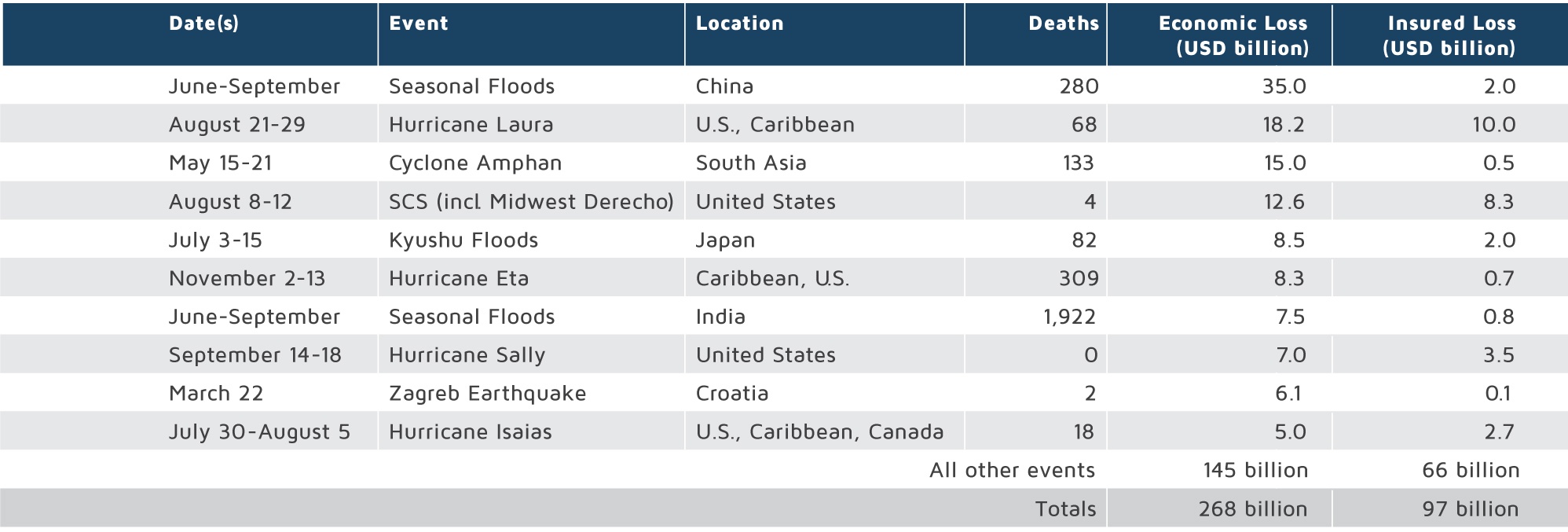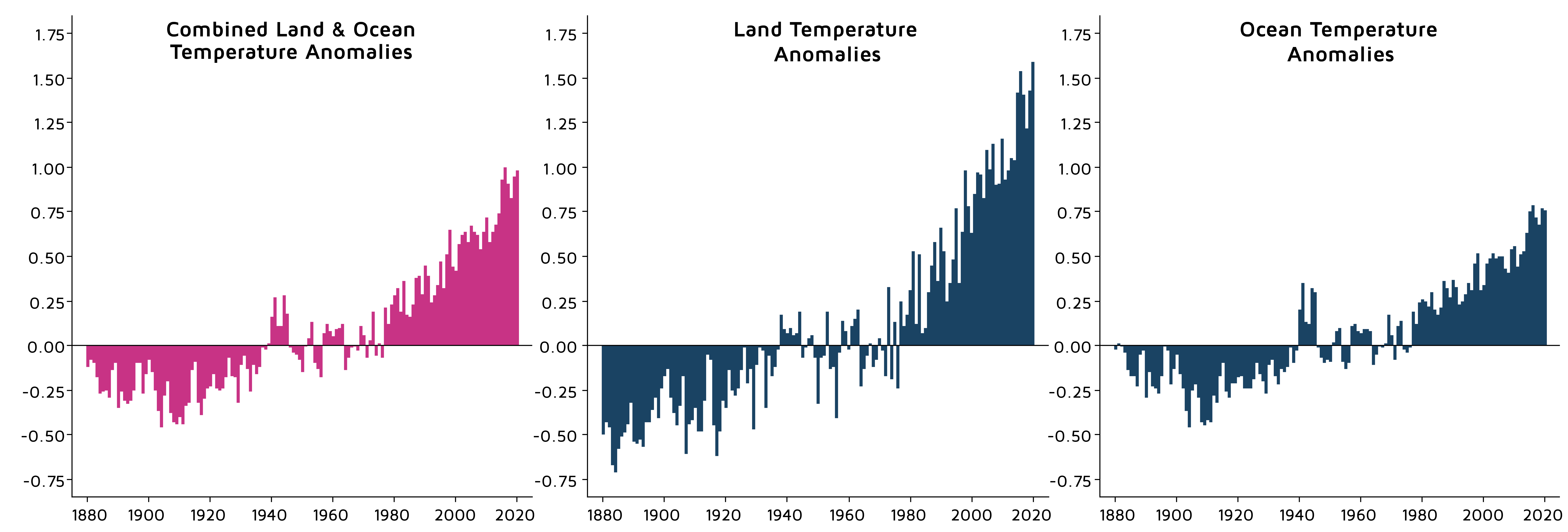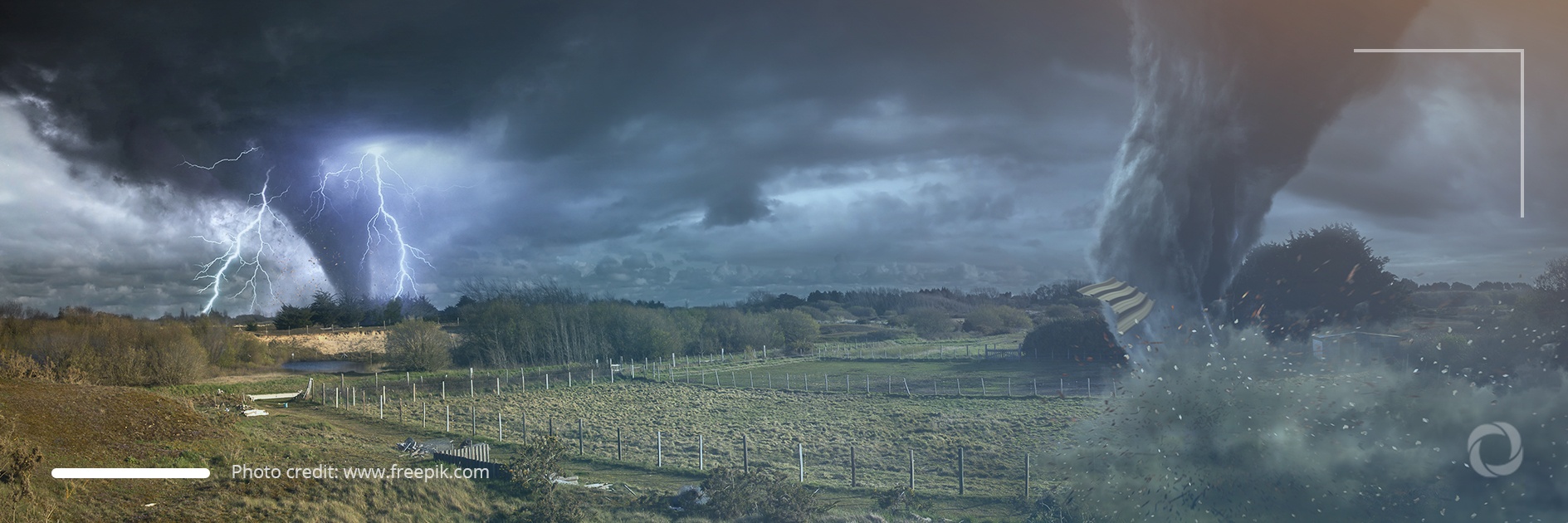In 2020, during one of the most challenging years in modern history, 416 notable natural disasters were documented on a regional, peril, or event-level scale in addition to pandemic-related events, this being the highest number since 2000. According to the report Weather, Climate & Catastrophe Insight, the economic losses these inflicted exceeded the average of the 21st century by 29%.
Global statistics
According to the report compiled by AON, a leading global service providing firm, in 2020 direct economic losses and damages from notable natural disaster events were assessed at US$268 billion. Although this figure was far from reaching the record-level peaks recorded in 2011 – US$557 billion in losses and in 2017 – US$485 billion, nevertheless, standing at US$244 billion, it exceeded the average of the 21st century by 29%.
Fig.1. Top 10 global economic loss events

Generally speaking, 2020 was the fifth costliest year in terms of weather-related natural catastrophes. The most expensive individual event is said to have been the tropical cyclone estimated at US$78 billion while the most noteworthy peril was the severe convective storm that cost a record level of US$63 billion.
Fig.2. Global Economic losses by Peril
Source: Weather, Climate & Catastrophe Insight, 2020 Annual Report
In terms of global temperature, last year was the second warmest year for both land and ocean temperatures since 1880. According to the National Climatic Data Centre, 2020 was 0.980 C warmer compared to the historical norm.
Fig.3. Global Land and Ocean Temperature Anomalies: 1880 – 2020

Steve Bowen, managing director and head of catastrophe insight on the Impact Forecasting team at AON noted:
“The juxtaposition of observed record heat and cold around the globe highlighted the humanitarian and structural stresses from temperature extremes, it becomes more imperative to explore ways to better manage the physical and non-physical risks that are more urgently requiring actionable solutions”.
Regional figures
Considering regional statistics, last year 12 storms and six hurricanes occurred in the U.S., making the 2020 Atlantic hurricane season a record-breaking year. Wildfire-related events caused massive damage across the Western U.S., making 2020 the third-costliest year for this peril. Two serious hurricanes, Eta & Iota, devastated North America with catastrophic consequences while severe hailstorms in the Calgary metro region (Canada) triggered a billion-dollar insurance industry payout. In 2020, an earthquake with a magnitude of 6.4 caused billion-dollar losses in Puerto Rico.
Severe wildfires occurred across South America having a major impact on the Pantanal region in Brazil, Bolivia, and Paraguay while extended drought conditions caused a decline in agrarian crop yields in Brazil and Argentina. In 2020, Europe recorded the lowest yearly insured losses in 14 years although the earthquake in Zagreb on March 22 caused huge structural damages. In the Middle East, the Izmir earthquake on October 30 killed 117 people while rainfall in Israel prompted almost $500 million payouts by insurers.
Western, Central, and Eastern Africa experienced widespread flooding in 2020 with 1,000 people being killed as a result of natural disasters there. Flooding in Asia last year caused financial losses equal to US$55 billion. The Philippines was struck by the world’s strongest land-falling cyclone, Typhoon Goni, with 315 kph, 1-minute average sustained winds. The warmest temperature ever documented north of the Arctic Circle was registered on June 20, 2020 – 38.0°C in Verkhoyansk in Russia. Cyclones Harold and Yasa, Category 4-equivalent storms, caused extensive damage in the South Pacific Islands. Several strong hailstorms initiated a multi-billion-dollar insurance bill in Australia.

